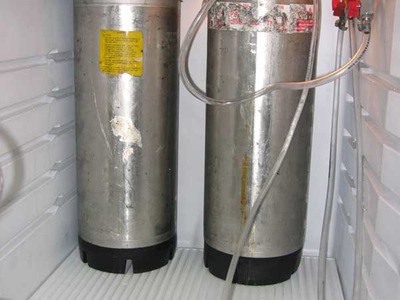The basic aim of this project is to create a system that gives updates on the amount of beer placed in a keg using your WiFi. You may have seen a few disappointed faces while topping up beer glasses whenever you empty the keg to fill up beer glasses. You may have estimated a bit differently when you picked up the keg, but actual measure comes out to be a little different. This project will help you know as to how much beer is left in keg without lifting up the keg. You can always start with your bathroom scale.

Just take it apart and remove the load cells from the internal circuit. Now connect an analog-digital converter with center tap wire using a voltmeter. This will lead to the formation of two complete bridges. Now, as you connect the center tap with ADC in pairs on both sides, connect the positive wires with 3.3V output point from a Particle Photon. The negative wires need to be connected with ADC ground. Now connect Photon with ADC through a 12C wire with the help of a Photon Shield.
If you research a bit, you will find specific codes that will help in differential measurement of every load pair cell. Now place the keg over the scale full as well as empty and take specific round readings for every state. It will calibrate the scale readings accordingly. The complete keg count needs to be divided by 53.3, an equivalent value for 12oz. Beers in approx. 5 gallon cornelius keg. To find the right value for single beer take the voltage reading and divide that by single beer count. You can also add a sample filter to the code in order to get a stable reading and then publish the variable in Particle cloud.
The published variable can thus be read by different programs. It will fluctuate a bit with time but that’s a minor thing. As the keg gets emptied the value on graph gets broader. You can also add other values like temperature sensor, humidity or pressure sensor to see the final values.
For schematics and code check out the link below.
Filed Under: Reviews


Questions related to this article?
👉Ask and discuss on EDAboard.com and Electro-Tech-Online.com forums.
Tell Us What You Think!!
You must be logged in to post a comment.